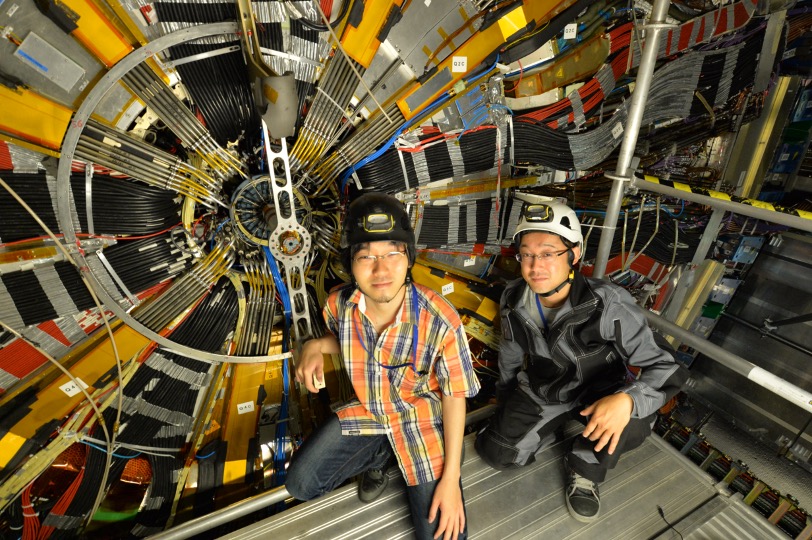


Belle
This is an international joint experiment to observe the properties of B- and anti-B-meson pairs, in detail with the Belle II detector generated by the electron-positron collider SuperKEKB, the accelerator in the Tsukuba campus with a circumference of 3 km.
Through observation and analysis, we are trying to measure new physics beyond the standard theory.
Belle

Neutrino
This is an international joint experiment to conduct the T2K long-baseline neutrino oscillation experiments using the J-PARC,Japan Proton Accelerator Research Complex of the high intensity proton accelerator at the Tokai campus. We will conduct neutrino oscillation experiments using anti-muon neutrinos, the antiparticles of muon neutrinos, and will be the first in the world to study CP symmetry related to neutrinos.
Neutrino

Energy Frontier
To explore new physics using energy frontier accelerators, we participate the LHC/ATLAS international joint experiment at CERN in Switzerland, and promote research and development for future energy frontier experiments, including the International Linear Collider (ILC) experiment.
Energy Frontier

Hadron Physics
At the J-PARC Hadron Experimental Facility on the Tokai campus, a variety of nuclear and particle physics experiments are being conducted by using high intensity proton beams.
The experiments are such as
the spectroscopic studies of the hyper-nuclei containing strange quarks,
studies of the mass spectrum of hadrons composed of multi quarks,
search for the rare decays of neutral kaon,
and search for the coherent conversion of muon to electron.
Hadron Physics

Experimental Cosmophysics
We have installed a special telescope at the Atacama Highlands in Chile, South America, to observe the Cosmic Microwave Background Radiation (CMB), which is an electromagnetic wave (light) emitted 13.8 billion years ago and is called "the oldest light in the universe. By studying the CMB in detail, we can understand what the universe was like immediately after its birth.
Experimental Cosmophysics

Muon-Neutron
We are searching for new physics beyond the standard model using muons and neutrons. The main activities of our group are the muon g-2/EDM experiment at J-PARC, Tokai Campus, and the TUCAN experiment which is a neutron electric dipole moment search at TRIUMF.
Muon-Neutron

Wako Nuclear Science Center
Experiments are conducted using an accelerator at the RIKEN Nishina Center in Wako, Saitama Prefecture.
We artificially create nuclei that do not exist stably in nature (i.e., short-lived nuclei) and investigate their properties. We are investigating the properties of unstable elements with neutron magic number around 126, aiming to determine the conditions for the elemental synthesis process after a supernova explosion.
Wako Nuclear Science Center
ページの先頭へ
